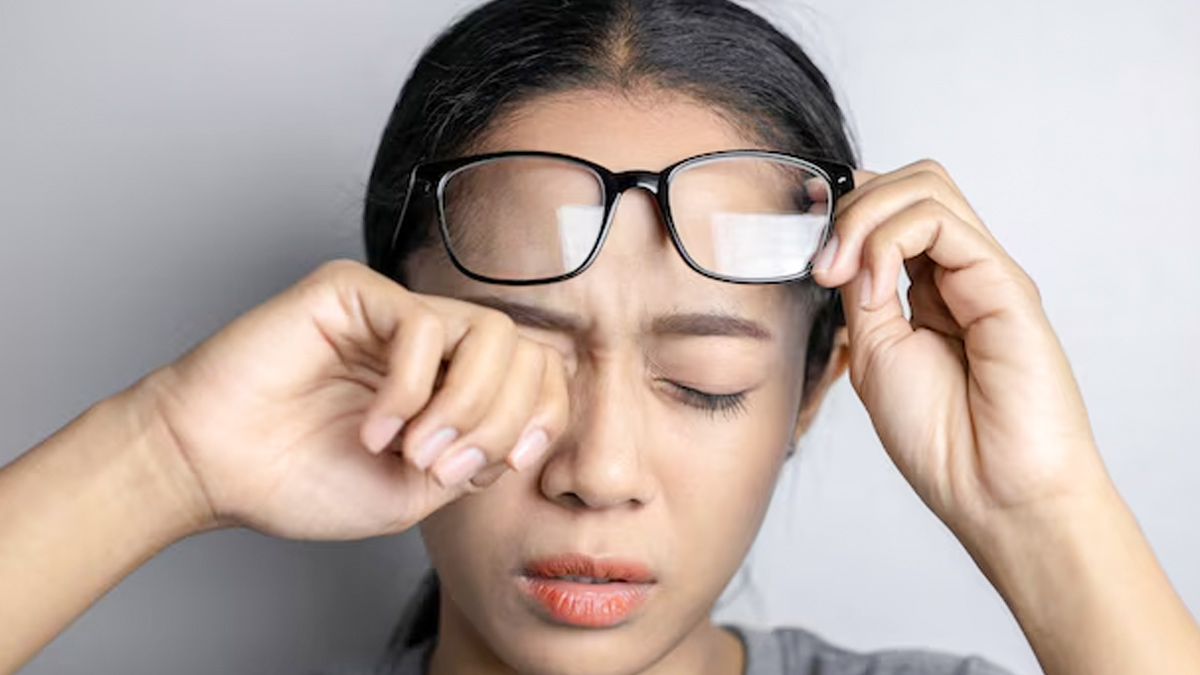
When your eye starts twitching, it’s often nothing more than a harmless spasm. While most people have a superstitious belief behind it, it is usually triggered by stress, fatigue, or too much caffeine. But sometimes, people worry if twitching could be linked to something more serious like an eye stroke. An eye stroke, also called retinal artery occlusion, is a medical emergency where a blood clot or plaque blocks an artery supplying blood to the retina at the back of the eye.
Table of Content:-
While the two are not directly related, knowing the difference can help you act on time when your vision is at risk.
Also Read: Eye Stroke: More Common In Older Adults But Why Young People Develop It Too
What Causes Eye Twitching?

"Common eye twitching (myokymia) is usually a harmless, involuntary muscle spasm triggered by stress, fatigue, caffeine, or eye strain," says Dr Madhusmita Behera, Senior Consultant, Department of Cataract, Orbit and Oculoplastic Surgery, Rotary Techno Nethralaya, Sector V. "While annoying, it's typically temporary and resolves on its own."
In rare cases, persistent or severe twitching can be a sign of a neurological disorder, such as benign essential blepharospasm.
In most cases, twitching is temporary and self-limiting. But if it persists or worsens, it’s important to seek medical advice.
Can Eye Twitching Signal Something Serious Like An Eye Stroke?

“Eye stroke itself does not cause eyelid twitching. If twitching is present, it’s usually from stress, fatigue, or coincidental eyelid myokymia," shares Dr Behera.
According to StatPearls Publishing, eyelid myokymia is described as continuous and fine contractions that affect lower eyelids mainly. While evidence regarding the prevalence and incidence of eyelid myokymia is scarce, it tends to affect healthy young subjects and is sometimes called the "medical students' disease" "because of the frequency with which it seems to affect medical students, especially at times of stress."
Dr Behera adds, "Only if a stroke affects the brain areas controlling the eyelid muscles could twitching or spasms occur—but this is different from an isolated retinal stroke.”
So, if you are experiencing eyelid twitching, it’s very unlikely to be due to an eye stroke. However, some people may notice twitching around the same time as vision loss and assume the two are linked.
Also Read: Is Your Eye Twitching a Sign of Something Serious? Neurological and Lifestyle Causes Explained
Possible Reasons Twitching May Be Noticed Around An Eye Stroke
Dr Behera explains that twitching may sometimes be noticed during an eye stroke episode, but often for unrelated reasons:
| Reason | Explanation |
| Coincidence | “Eyelid myokymia (twitching) is extremely common and often happens due to fatigue, stress, or anxiety. If someone experiences eye twitching before or after vision loss, they may mistakenly think they’re related.” |
| Stress/Anxiety | “An eye stroke is a frightening event. The stress response itself can trigger eyelid twitching, but it is a secondary effect, not a direct result of the stroke.” |
| Neurological Involvement (Rare) | “If the stroke is not only in the eye but involves the brainstem or facial nerve pathways, abnormal eyelid movements (spasms, twitching, drooping) can occur. This is very different from a pure retinal eye stroke and would be classified as a brain stroke affecting vision and facial muscles.” |
| Misinterpretation of Symptoms | “Some patients describe the sudden ‘flickering’ or ‘fluttering shadow’ of vision loss in an eye stroke as ‘eye twitching.’ But what they’re actually experiencing is visual disturbance, not true muscle twitching.” |
Symptoms That Raise Red Flags

Along with twitching, red-flag symptoms of eye stroke include:
- Sudden, painless vision loss
- Blurred or dim vision
- Visual field defects
- Eye floaters
- Flashes of light
- Eye pain
- Sudden onset of double vision
Associated systemic signs may include:
- Headache
- Dizziness
- Weakness
- Speech difficulty
- Facial drooping
Who Is Most At Risk?
“Individuals most at risk of eye stroke include those with hypertension, diabetes, high cholesterol, heart disease, or carotid artery disease. Smoking, obesity, sedentary lifestyle, clotting disorders, glaucoma, and advanced age further increase vulnerability. Prior history of stroke or transient ischaemic attack also significantly elevates the likelihood of eye stroke.”
Takeaway
Eye twitching on its own is rarely serious. But sudden, painless vision loss or visual disturbances should never be ignored. An eye stroke is a medical emergency where every minute counts. Prompt treatment can make the difference between saving and losing your sight.
Also watch this video
How we keep this article up to date:
We work with experts and keep a close eye on the latest in health and wellness. Whenever there is a new research or helpful information, we update our articles with accurate and useful advice.
Current Version